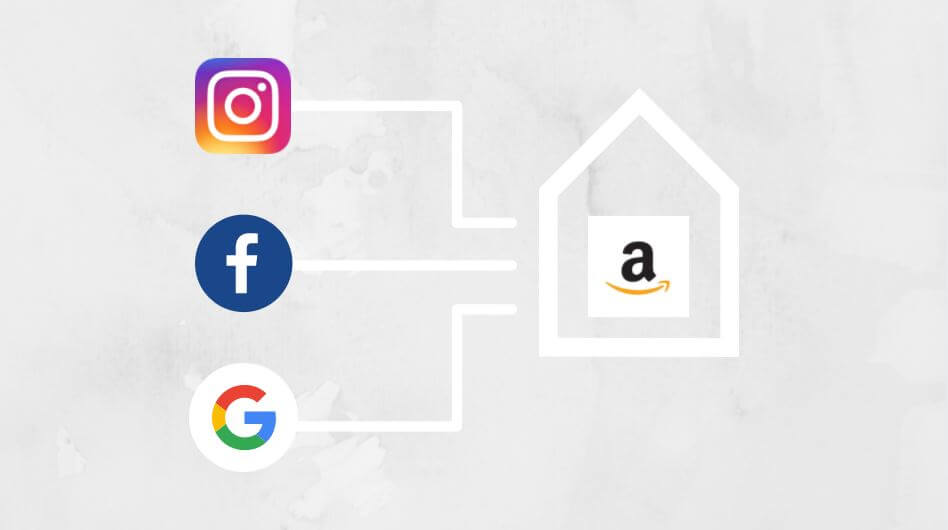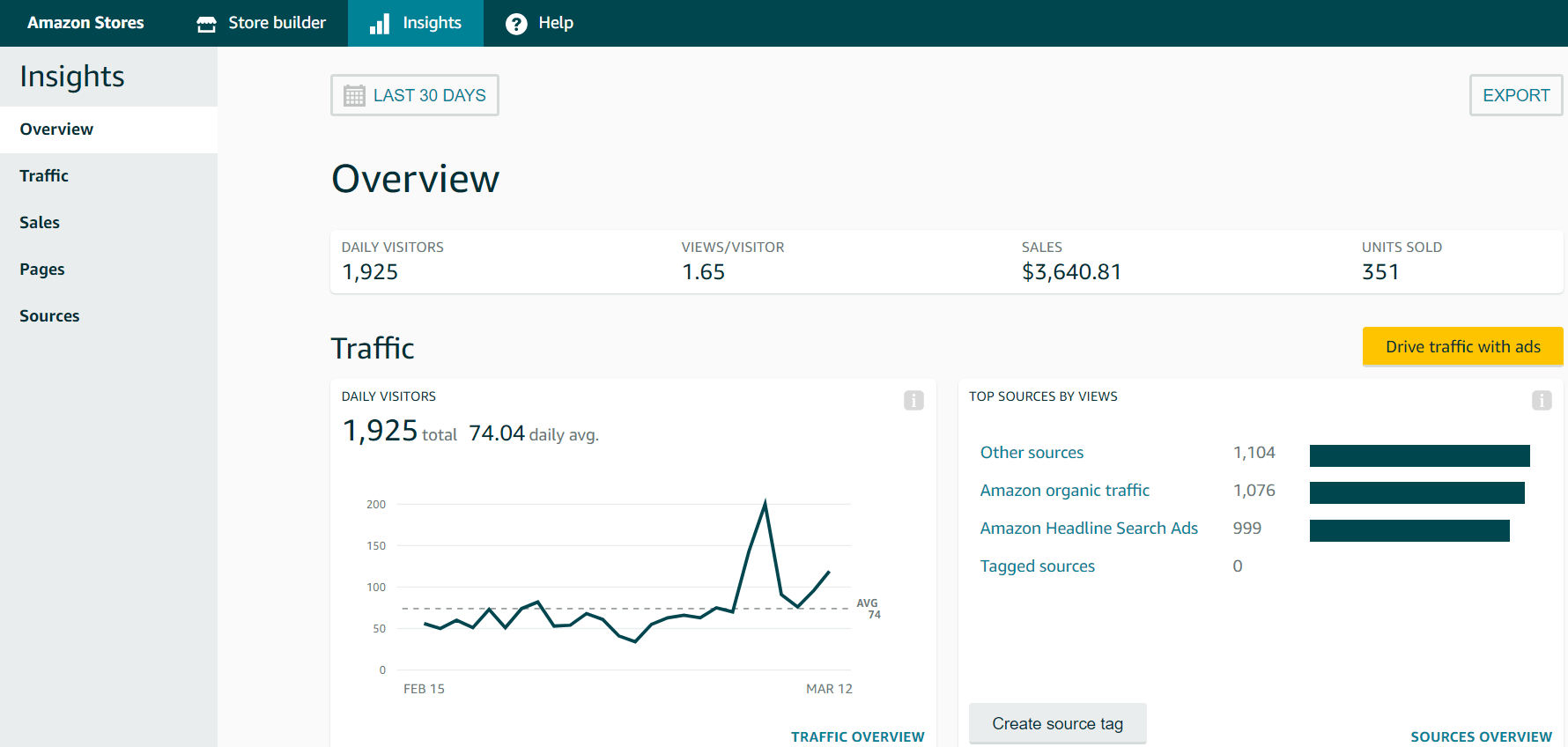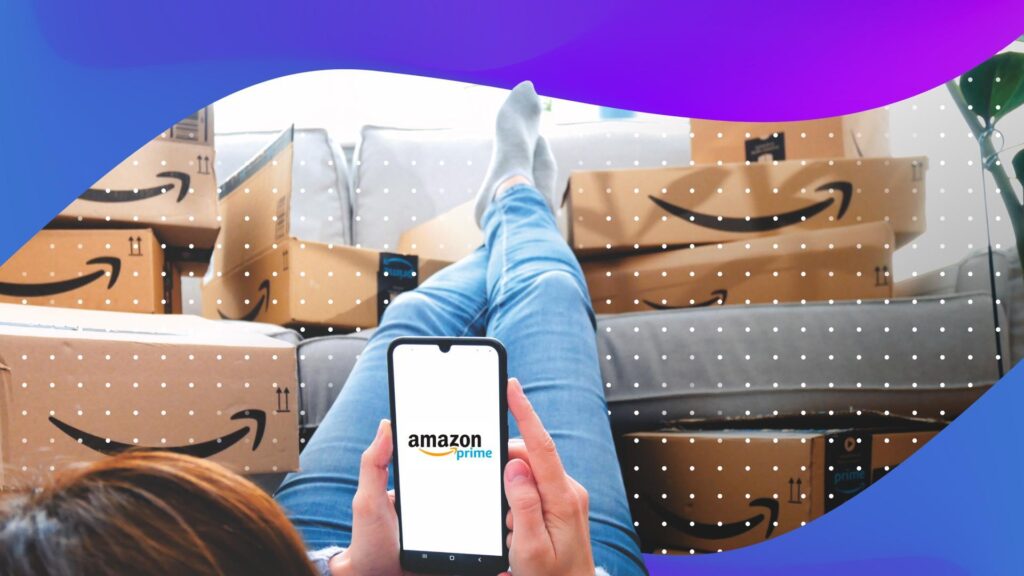Brands should be reaching their customers everywhere, not just when they’re on Amazon.
According to recent studies, 49% of shoppers start their search on Amazon.
Amazon Stores: Creative Management Solution For Vendors & Sellers
“My question to advertisers is: Do you want access to the other 51% of customers?” – Josh Brisco, Sr. Manager, Retail Search Operations at CPC Strategy

While it’s important for brands to be invested in the Amazon ecosystem, there’s also significant opportunity to be reaching shoppers when they’re not on Amazon.
With recent improvements to Amazon Stores – the primary showcase for a brand’s catalog on Amazon – it’s now possible to effectively track how well driving off-Amazon traffic to Amazon performs.
“The reason this is coming up now is because of the new tracking ability which exists in Amazon Stores Insights”, Pat Petriello, Head of Marketplace at CPC Strategy said.
“Amazon Store Insights should allow us to better quantify how that traffic that we’re sending performs. In the past, even though you could send traffic from Facebook to Amazon, you couldn’t track traffic – meaning you couldn’t quantify how effective the strategy was.”
Today, it’s a different story.
Brands with a Store are now in a prime position to capture shopper demand off of Amazon.
In the following article, our experts explain:
-
- Why You Should Be Driving Off-Amazon Traffic To Your Amazon Store
- How To Use NEW Amazon Store Insights to Track Off-Amazon Traffic
Driving Off-Amazon Traffic To Your Amazon Store
Driving traffic from Facebook, Instagram, Google & Bing Ads to the Amazon Marketplace is a great way for sellers to gain a competitive advantage and attract new customers.

This strategy is already a win-win for Amazon & Sellers – here’s why:
- Amazon wants to drive as many customers as possible to their channel.
- Likewise, this is also an effective strategy for Amazon Vendors to both incrementally grow their on-Amazon sales by capturing demand that may not have otherwise converted.
Although there are several ways to drive Off-Amazon traffic to your listings, up until recently it’s been difficult to measure the impact of creative in terms of traffic & sales – specifically for Amazon Stores.
What are Amazon Stores?
Amazon Stores is a valuable feature that allows brands to design and create multi-page catalogs to showcase their products and unique value proposition to shoppers.

Amazon Stores elevate the shopping experience by:
- Capitalizing on Internal & External Traffic Sources
- Potential to Boost Organic Ranking & Increase Sales
- Ability to Promote New Products To Existing Customers & Educate Prospects
The main benefit of Amazon Stores is to provide customized content to potential customers and to introduce prospective customers to your brand.
Each page gives brands the opportunity to design it ‘your way’ with lots of supportive content and freedom. It’s basically like creating your own ecommerce website on Amazon.
Benefits of Driving Off-Amazon Traffic to Amazon Stores
According to Petriello, driving off-Amazon traffic to your Amazon Store provides an opportunity to differentiate your brand on the Marketplace and opens up new opportunities for customer acquisition.

1. Differentiate Your Brand on Amazon
One of the benefits to driving off-Amazon traffic to your Amazon Store is it provides you with a branded place to build a presence on Amazon and gives you a location that you can drive off-Amazon traffic that is now trackable.
2. New Opportunities for Customer Acquisition
Instead of having your products listed side by side (on the SERP) with your competitors, you can actually drive the customer directly to your store where ONLY your products are showing.
Using Amazon Store Insights to Track Off-Amazon Traffic
Now that we understand the advantages of having an Amazon Store and driving off-Amazon traffic to it – how do we do it?
If you want to accurately track sales on your Amazon Stores (from sources outside of Amazon including Google, Bing, Instagram, Facebook, and more) you will need to leverage Amazon Stores Insights.

“The new Amazon Store Insights feature gives us insight around the effectiveness of the Store and allows us to understand how an audience interacts with the pages that we create,” AJ Swamy, Client Services Manager at CPC Strategy said.
“The Store Insights also allow us to tag external traffic so we can finally get more information around the effectiveness of external advertising campaigns that we route to our Stores. We also get insight around how many customers convert organically from the store which is ground breaking.”
There are 4 traffic sources that Amazon measures including:
1) Amazon Headline Search ads: Traffic from Headline Search ads on Amazon.
2) Amazon organic traffic: Traffic from within Amazon, including from search results or brand detail page links.
3) Tagged sources: A source tag helps you track the performance of specific traffic sources (aka off-Amazon traffic).
4) Other: All other traffic sources not categorized.
Track Amazon Store Traffic Using “Tagged Sources”
If you want to monitor off-Amazon traffic to your Amazon Store, you will need to create “tagged sources”.

Pro-Tip: Tagged sources data is only broken down to individual tags when it meets Amazon’s data count threshold within your selected time range. Amazon only provide a breakdown of the top 30 tags.
So, how does it work?
Let’s apply this to an example:
Joe owns a leather footwear brand. He wants to drive new customers using Facebook ads to his new Amazon Store.
- First, he launches a Facebook prospecting campaign to reach the brand’s target audience.
- Then, he creates lookalike audiences based on their email list.
- He logs into his Amazon Stores Insights and sets up a “source tag” to tie performance back to specific campaigns.

Now, Joe can log into his Amazon Stores Insights page to accurately track off-Amazon traffic /conversions as a result of his Facebook campaign.
A Word of Caution about Targeting:
According to Petriello, targeting is very important to the conversion process.
For example, if Cindy searches on Google for specific item (ex: Blue, 32-ounce, Hydro Flask water bottle) and the ad she clicks on sends her to an “Amazon Store” page full of water bottles, coffee cups and wine glasses – that creates a poor user experience.
“Essentially, you are making Cindy find the same product twice. Because she has already expressed she wants to purchase a very specific product, you should send her directly to that product’s detail page – not your entire catalog,” Petriello said.
Experts: FAQs About Off-Amazon to Amazon Stores Traffic
Q: If a customer clicks through to a product from a Store, then clicks around on other ads on Amazon and comes back, will the Stores track that sale?
A: Yes, the Store will still track that sale. The default attribution window is 14 days.
Q: Can products showcased in a Store link back to a product detail page when we don’t own the Buy Box or will it always link to our listing regardless of the Buy Box winner?
A: Products can and will still show in a stores regardless of what Seller/Vendor is winning the buy box at that given moment. Think of the Stores as being there for the “brand” and agnostic of a specific Seller or Vendor.
Q: If a brand is already running ads to their ecommerce site via AdWords / Facebook, will these ads compete with their Amazon Store ads?
A: On Facebook there should be no issue. Google/Bing we can only win one Keyword auction per account, so if we intend to show an ad for the ecommerce site and Amazon, we will need two accounts.This ad should be considered part of Amazon ad budget. Ultimately, it is beneficial for the business to be occupying as much high-intent Search real estate as possible.
Final Takeaways:
When Amazon updated their Terms of Service in 2015 to prevent the manipulation of sales rank, it became much more difficult for both sellers and vendors to proactively drive sales velocity for their offers.
Since then, promotions like Goldbox and lightning deals as well as aggressive on-Amazon advertising campaigns stood out as the most reliable ways to rapidly demonstrate to Amazon that your offers could sell through well.
With the addition of off-Amazon traffic campaigns, brands now have another powerful lever to grow incremental sales on the Amazon Marketplace.
Want to learn more about driving Off-Amazon traffic to Amazon? Email [email protected] or comment below.
You Might Be Interested In












